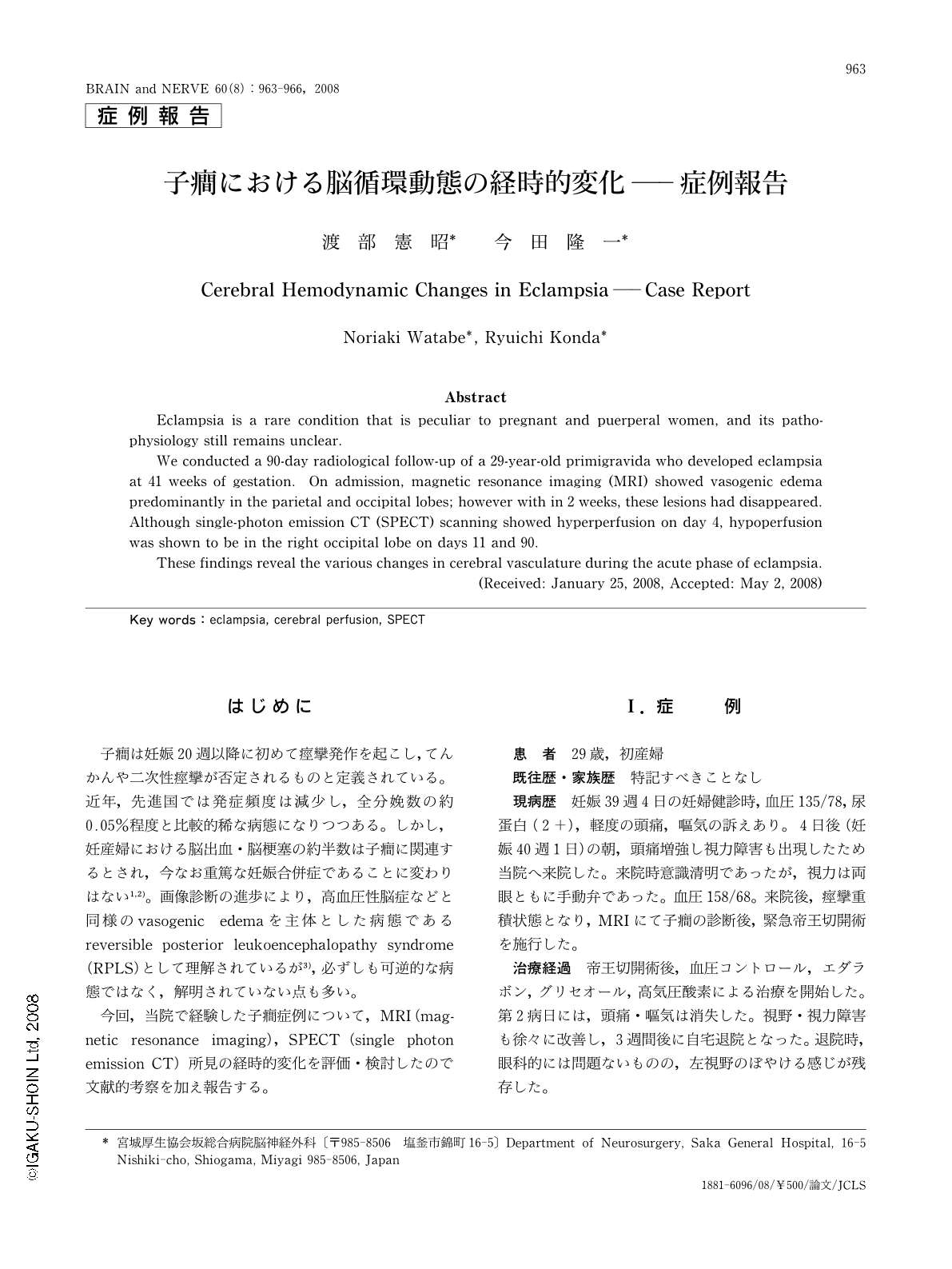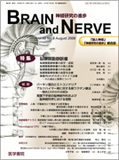Japanese
English
- 有料閲覧
- Abstract 文献概要
- 1ページ目 Look Inside
- 参考文献 Reference
はじめに
子かんは妊娠20週以降に初めて痙攣発作を起こし,てんかんや二次性痙攣が否定されるものと定義されている。近年,先進国では発症頻度は減少し,全分娩数の約0.05%程度と比較的稀な病態になりつつある。しかし,妊産婦における脳出血・脳梗塞の約半数は子かんに関連するとされ,今なお重篤な妊娠合併症であることに変わりはない1,2)。画像診断の進歩により,高血圧性脳症などと同様のvasogenic edemaを主体とした病態であるreversible posterior leukoencephalopathy syndrome(RPLS)として理解されているが3),必ずしも可逆的な病態ではなく,解明されていない点も多い。
今回,当院で経験した子かん症例について,MRI(magnetic resonance imaging),SPECT(single photon emission CT)所見の経時的変化を評価・検討したので文献的考察を加え報告する。
Abstract
Eclampsia is a rare condition that is peculiar to pregnant and puerperal women, and its pathophysiology still remains unclear.
We conducted a 90-day radiological follow-up of a 29-year-old primigravida who developed eclampsia at 41 weeks of gestation. On admission, magnetic resonance imaging (MRI) showed vasogenic edema predominantly in the parietal and occipital lobes; however with in 2 weeks, these lesions had disappeared. Although single-photon emission CT (SPECT) scanning showed hyperperfusion on day 4, hypoperfusion was shown to be in the right occipital lobe on days 11 and 90.
These findings reveal the various changes in cerebral vasculature during the acute phase of eclampsia.

Copyright © 2008, Igaku-Shoin Ltd. All rights reserved.


